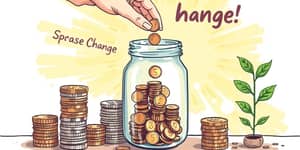
Managing your personal finances can be daunting, but it doesn’t require complex tools or endless number-crunching. By embracing intuitive methods, you can keep control of your money using everyday resources. This article will guide you through proven strategies, empowering you to build a budget that fits your lifestyle without ever opening a spreadsheet.
Ready to transform your financial habits? Let’s dive into accessible solutions that anyone can adopt.
Not everyone is a fan of detailed digital ledgers or complicated formulas. For many, the very idea of a spreadsheet is intimidating or simply inconvenient. By shifting to simpler frameworks, you can focus on what matters most: tracking your spending and reaching your financial goals. Whether you prefer pen and paper or an app with minimal bells and whistles, these approaches offer unmatched flexible and accessible budgeting.
Furthermore, when you remove the barrier of technology, budgeting becomes less of a chore and more of a habit you can maintain. The mental clarity gained by eliminating excessive detail helps you stay motivated and emotionally connected to your progress.
Choosing a no-spreadsheet approach can rekindle enthusiasm for financial planning. You’re more likely to stick with a system that doesn’t feel like a chore, and each small win builds confidence. Over time, this momentum encourages you to explore new opportunities, such as starting an emergency fund or finally tackling that lingering debt.
The foundation of any budgeting system lies in understanding where your money comes from and where it goes. Follow these principles to build a solid framework before choosing a specific method.
First, know your income. Calculate your after-tax income calculation by combining regular paychecks and any side hustle earnings, then subtracting business expenses or taxes if applicable. This figure determines the pool of funds you have to allocate each month.
Next, identify essential versus discretionary expenses. Needs include rent, food, utilities, and insurance; wants cover entertainment, subscriptions, and dining out. Making this distinction clear in your mind helps you prioritize spending.
Automate when possible. Schedule recurring payments for bills and set up automatic transfers to savings and debt accounts. Regular automation reduces decision fatigue and ensures you stick to your plan.
Maintaining surplus/deficit awareness helps you avoid unpleasant surprises and empowers you to make proactive adjustments. This insight is more valuable than tracking every minor expense; it highlights trends and fosters informed decision-making.
Picking the right tools can transform a good system into a great one. Whether you prefer digital convenience or tactile feedback, there is a solution for you.
One of the most powerful hacks in personal finance is automation. By treating your savings and debt repayment as non-negotiable, you build wealth without even thinking about it.
Set up recurring payments for rent, utilities, and insurance. Then create automatic transfers to an emergency fund, retirement account, or brokerage. Choose days immediately after your income arrives to avoid spending temptation.
This stress-free financial automation ensures you never miss a payment and gradually shifts your focus toward your long-term ambitions.
Automation also relieves mental burden. Instead of reacting to due dates or remembering to move money around, your system quietly builds security while you focus on living your life. This hands-off wealth-building is the cornerstone of many successful savers and investors.
You still need to monitor your spending to avoid surprises. Tracking can be as simple as jotting down daily purchases in a paper log or phone notepad. Review these notes weekly to spot trends and redirect funds if one category runs hot.
Every quarter, perform a more in-depth review. Compare your spending against your initial plan and adjust for life changes such as raises or unexpected bills. This cadence keeps your system agile and relevant.
Seeing small wins—like under-spending on groceries or hitting a savings goal—reinforces positive behavior. Celebrate these victories to maintain motivation, whether by sharing with a friend or treating yourself modestly within your budget.
Here is a sample monthly breakdown for someone earning $3,100 after taxes. Use this table as a blueprint and modify numbers to fit your unique situation.
These numbers illustrate how surplus and deficit awareness can guide decisions and reveal opportunities for growth.
Even the best systems encounter hiccups. If you find yourself overspending in discretionary categories, consider shifting to a stricter envelope approach or setting low-balance alerts in your banking app.
For those with irregular income, create a buffer by transferring a fixed amount to a holding account whenever money arrives. Use that buffer to cover essentials during lean periods.
Impulse purchases are another challenge. Combat them by scheduling a cooling-off period or by making your savings transfer the first “bill” you pay each month.
Every challenge presents a learning opportunity. When you confront a budgeting hurdle, reflect on what triggered it and adjust your system accordingly. This adaptive mindset turns setbacks into catalysts for growth.
Consistency is the secret ingredient that turns a budgeting method into a lifestyle.
By implementing these rhythms, you can maintain momentum and adapt gracefully to life’s changes.
Budgeting does not require a spreadsheet to be effective. With simple frameworks like the envelope system or pay-yourself-first approach, combined with strategic automation and regular reviews, you can achieve financial mastery using basic tools.
Remember that simplicity fosters long-term success. Choose the method that resonates with you, start small, and build confidence with each positive step. Over time, your disciplined habits will compound, leading to greater security, freedom, and peace of mind.
Embrace experimentation: try different methods and tools until you find the mix that feels right. The perfect budget is the one you will actually use, month after month.
References













